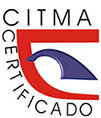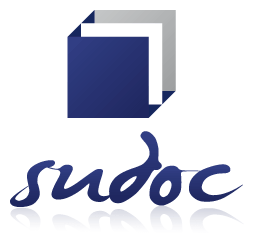Interstitial Space and Nation Language as Key Concepts in Latin American Literary Discourse
Keywords:
interstitial space, semiotic square, nation language, Latin American literary discourseAbstract
Introduction: This paper offers a critique of Silviano Santiago’s concept of interstitial space (entre-lugar) and Kamau Brathwaite’s notion of nation language, with the aim of analyzing their potential and limitations within Latin American literary discourse.
Methods: To carry out this analysis, a critical reading of these terms was conducted using Greimas’s semiotic square and the implications of the concept of language, respectively.
Results: The findings revealed latent limitations within the concept of interstitial space, allowing for an argument concerning overdetermination and the possibility of multiple interstitial spaces. Furthermore, the study identified tensions between the code and nation language in the expression of the desiring subject within Latin American literary discourse.
Conclusions: This study suggests that any positioning regarding the formation of Latin American literary discourse should adopt a multicausal approach that considers the tension between the language code and its non-signifying dimension.
Downloads
References
ABRIL, G. (1995). Análisis semiótico del discurso. En DELGADO, J. M. & GUTIÉRREZ, J. (EDS.), Métodos y técnicas cualitativas de investigación en Ciencias sociales (pp. 427-464). Síntesis.
BENÍTEZ ROJO, A. (1989). La isla que se repite: El Caribe y la perspectiva posmoderna. Ediciones del Norte.
BRATHWAITE, K. (2010). La unidad submarina. Ensayos caribeños. En BONFIGLIO, F. (ED.) La unidad submarina. Ensayos caribeños. Ediciones Katay.
CABALLERO, L. (2014). Modalidades semánticas del lenguaje. En CURBEIRA, A. (ED.) Teoría lingüísticas: corrientes y concepciones (pp. 235-247). Editorial Félix Varela.
CAISSO, C. T. (2017). El Caribe como comunidad cultural en Kamau Brathwaite y Derek Walcott. Cuadernos de Literatura del Caribe e Hispanoamérica, (26), 43-63. Recuperado de https://investigaciones.uniatlantico.edu.co/revistas/index.php/cuadernos_literatura/article/view/1831/pdf_57
CROS, E. (2003). El sujeto cultural. Sociocrítica y psicoanálisis. Fondo Editorial Universidad AFIT. (Original publicado en 1997).
CUBA, L. E., CABRERA, E., MEDINA, J., LAHERA, Y., HERNÁNDEZ, SH., TORRAS, C., VENEREO, T., BERMÚDEZ, I., & SÁNCHEZ, Y. (2012). Introducción a los estudios lingüísticos. Editorial Pueblo y Educación.
ESPINOZA, D. A. (2006). El sujeto enunciador lírico: aproximaciones a su problemática. Escritos, Revista del Centro de Ciencias del Lenguaje, (33), 65-77.
ESTUPIÑÁN, M. L., & RODRÍGUEZ FREIRE, R. (EDS.) (2012). Una literatura en los trópicos: Ensayos de Silviano Santiago (pp. 57-76). Escaparate Ediciones.
FERNÁNDEZ-ARROYO, A. (2023). Conceptualización geográfico-social de la dualidad lugar-sitio. Cuadernos Geográficos, 62(1), 255-272. https://doi.org/10.30827/cuadgeo.v62i1.26717
FIELBAUM, A., & ERRÁZURIZ CRUZ, R. (2014). El entre-lugar como un pensamiento del riesgo. Entrevista a Silviano Santiago. Revista Chilena de Literatura, (88), 309-318.
GALBÁN, A. M. (2014). Las macrocategorías semánticas modales de la valoración, certidumbre, interés, afectividad y expresividad. En CURBEIRA, A. (ED.) Teoría lingüísticas: corrientes y concepciones (pp. 281-295). Editorial Félix Varela.
GAZTAMBIDE, A. (2006). La invención del Caribe a partir de 1898 (las definiciones del Caribe, revisitadas). Jangwa Pana, 5(1), 1-23.
GUZMÁN, O. (2018). El patrón subyacente de las teorías sociales. Revista Santiago, (18), 18-32.
HERNÁNDEZ, A. (2013). El debate internalismo–externalismo: elemento sustancial para una Sociología del Conocimiento. En MUÑOZ GUTIÉRREZ, T. & GÓMEZ VASALLO, C. (EDS.) La sociología del conocimiento. Selección de Lecturas (pp. 368-386). Editorial Félix Varela.
HERNÁNDEZ-ARROYO, A. (2023). Conceptualización geográfico-social de la dualidad lugar-sitio definiendo el objeto de la Geografía contemporánea. Cuadernos Geográficos, 62(1), 255-272. https://doi.org/10.30827/cuadgeo.v62i1.26717
KANDEL, E. R., SCHWARTZ, J. H., & JESSELL, T. M. (2001). Principios de neurociencia (AGUD APARICIO, J. L., TRANS.). McGraw-Hill Interamericana de España.
LAMO DE ESPINOSA, E., GONZÁLEZ, J. M., & TORRES, C. (1994). La sociología de la ciencia del conocimiento. Alianza Editorial.
MOREJÓN, N. (1972). Introducción a la obra de Nicolás de Guillén. En Biblioteca virtual Miguel Cervantes. Recuperado de https://www.cervantesvirtual.com/portales/nicolas_ guillen/su_obra_introduccion/
POSSO, K. (2015). A importância de devir minoritário silviano santiago e a resistência à identidade. En COSTIGAN, L. H. & LOPES, D. (EDS.), Silvano Santiago y los Estudios Latinoamericanos (pp. 189-2003). Instituto Internacional de Literatura Iberoamericana.
RODRÍGUEZ, R. (2020). Contemporaneidad de Uma literatura nos trópicos (o la diseminación de la infidelidad). En RODRÍGUEZ FREIRE, R. (ED.), La forma como ensayo. Crítica ficción teoría (pp. 121-144). Ediciones La Cebra.
Published
How to Cite
Issue
Section
License
Copyright (c) 2025 Yansy Sánchez Fernández

This work is licensed under a Creative Commons Attribution-NonCommercial 4.0 International License.
Usted es libre de:
Compartir — copiar y redistribuir el material en cualquier medio o formato
Adaptar — remezclar, transformar y construir a partir del material
La licenciante no puede revocar estas libertades en tanto usted siga los términos de la licencia
Bajo los siguientes términos:
Usted es libre de:
Atribución — Usted debe dar crédito de manera adecuada, brindar un enlace a la licencia, e indicar si se han realizado cambios. Puede hacerlo en cualquier forma razonable, pero no de forma tal que sugiera que usted o su uso tienen el apoyo de la licenciante.
NoComercial — Usted no puede hacer uso del material con propósitos comerciales.
No hay restricciones adicionales — No puede aplicar términos legales ni medidas tecnológicas que restrinjan legalmente a otras a hacer cualquier uso permitido por la licencia.


















